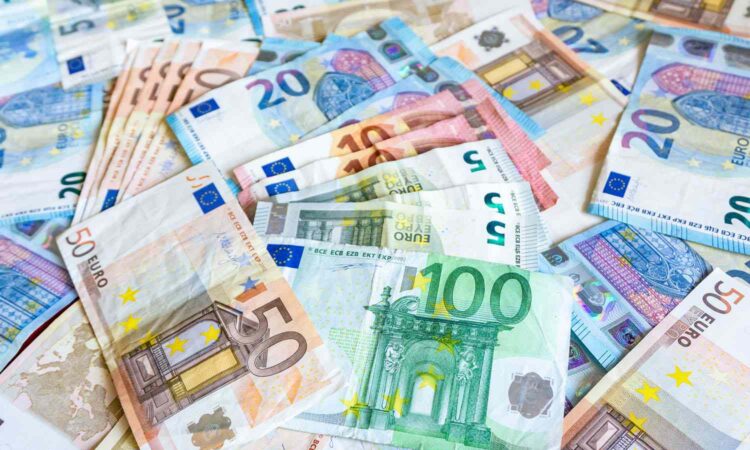
What Is the Euro?
The euro is the official currency of the European Union (EU), adopted by 19 of its 27 member nations. It is the world’s second most popular reserve currency after the U.S. dollar, and the second most traded.
Key Takeaways
- The euro is the official currency of the European Union (EU), adopted by 19 of the EU’s 27 member nations.
- It is the world’s second most widely held and traded currency after the U.S. dollar.
- The euro remains overwhelmingly popular in the countries using it for its role in easing European trade and travel and promoting political integration of the EU.
- Adoption of a common currency without the stabilizing features of a fiscal union was a major cause of the European sovereign debt crisis, forcing the EU to deepen its economic and political integration.
Understanding the Euro
Launched in 1999 as part of the EU’s integration as the European Economic and Monetary Union (EMU), the euro was strictly an electronic currency until the introduction of paper notes and coins denominated in euros in 2002. The euro is sometimes abbreviated as “EUR.”
The euro is the sole legal tender in the EU member states that have adopted it, including Austria, Belgium, Cyprus, Estonia, Finland, France, Germany, Greece, Ireland, Italy, Latvia, Lithuania, Luxembourg, Malta, the Netherlands, Portugal, Slovakia, Slovenia, and Spain. These countries form the eurozone, a region where the euro serves as the common currency. Four small non-EU nations (Andorra, Vatican City, San Marino, and Monaco) also use the euro as their official currency and several countries have currencies pegged to the euro.
The European Central Bank (ECB) has an EU mandate to maintain price stability by preserving the value of the euro. The ECB is part of the European System of Central Banks (ESCB) along with the national central banks of all the EU member states, including those that have not adopted the euro.
Adopting the euro eliminated foreign exchange risk for European businesses and financial institutions with cross-border operations in the increasingly integrated EU economy. The fiscal and monetary prerequisites for adopting the euro have also encouraged deeper political integration of member states.
On the other hand, the eurozone brought together economies with disparate characteristics and national budgets without the authority for the sort of cross-border fiscal transfers that take place between the U.S. federal government and U.S. states.
That has forced the EU to introduce measures like ECB guarantees for the debt issued by member states in response to market turmoil caused by the European sovereign debt crisis. National governments and central banks remain constrained in responding to economic conditions in their country by their reliance on the ECB’s monetary policy and budget rules set by the EU.
For example, the central bank of a country experiencing an economic slowdown can no longer cut interest rates, devaluing a national currency against that of its major European trading partners to stimulate exports.
While the euro can’t be devalued to facilitate economic adjustments within the EU, that’s also made the common currency a more reliable store of value. The euro remains overwhelmingly popular among the residents of the countries that have adopted it.



